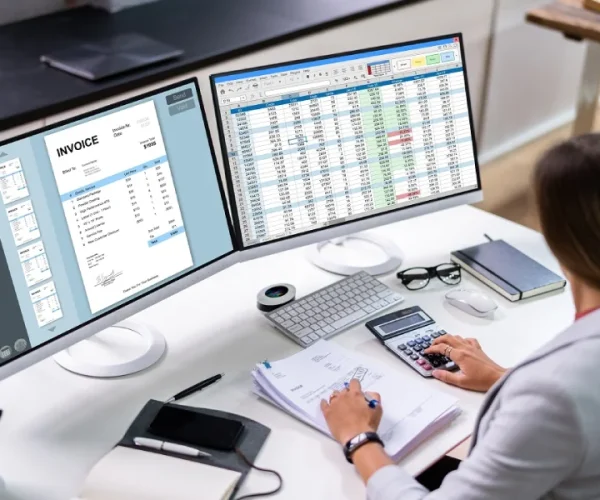
The Ultimate Guide to Medical Billing
- March 7, 2025
- By Jeorge
- 155
- Medical Billing
Medical billing is the process of making healthcare reports that doctors and provider organizations can send to insurance companies to get paid for the medical services they provide. A medical biller takes care of the claim to make sure the organization gets paid for the work the provider did after turning a healthcare service into a billing claim. A skilled medical biller can help a doctor’s office or healthcare group make the most money possible.
Medical coding and billing are two different but connected roles in hospital revenue cycle management. Both play a big role in the healthcare business because they report findings, treatments, and supplies to private and public insurers, like Aetna and Medicare.


Is medical coding the same as medical billing?
Medical coders and billers both work with clinical staff and need to know medical terms, anatomy, and processes to read and understand operation reports and doctor’s notes. Sometimes medical coders help with bills, and sometimes they code for billing companies. In medical billing services for small practices, it’s normal for the same person to code and bill for medical care. Even though billing and coding are not the same thing, they are both very important parts of the healthcare income cycle.
Complete Medical Billing Process
The medical billing cycle has many steps that can take anywhere from a few days to a few months. The most important things are accurate bills and following up on time. In most states, insurance companies have to pay claims within 30 to 45 days. On the other hand, payers set dates for making claims that, if missed, mean coverage is no longer valid. The late claim is turned down without a chance to argue, and the group loses the money.
Any mistake in the billing process can cost a lot of money and time in the office, which shows how important it is for medical billers to know what they’re doing in the billing process. Front-end and back-end billing staff are very important to the financial health of doctor’s offices, hospitals, health systems, and surgery centers, as well as other service organizations.
Front End Medical Billing
Front-end medical billing staff should know a lot about the types of payers that their company works with. Billers can make sure that patients are eligible for insurance by learning about the different payers and health plans that the organization accepts. They can also keep track of filing dates and which payers need services to be pre-approved.
Pre-registration and registration
When a patient calls the provider’s office to make an appointment or checks in at the hospital, the insurance claim processing starts. Staff usually get information about the patient’s background and insurance, or the patient fills out a registration form when they get to the place of service.
When the billing staff follows standard working procedures for registering patients, they are more likely to get the data they need without making mistakes. When figuring out a patient’s status and perks, as well as getting prior permission, having accurate patient info is very important.
Verification of insurance eligibility
The front desk staff has to make sure that the services are covered by the patient’s health plan before they can get paid. This step, which can be done over the phone or through an insurer’s online eligibility verification tool, checks the patient’s status, as well as their share, copay, deductible, and plan benefits for their field and place of service.
It’s also important to get the appropriate preauthorization. Most of the time, insurers need preauthorization before they will pay for medical services that aren’t done in a general care setting.
Point of service collections
After finding out about the patient’s benefits during qualifying verification, staff are told how much the patient owes. This lets the biller get the copay, deductible, coinsurance, or full amount due from the patient while they are at the front desk, either checking in or out.
Point-of-service collections are an important part of medical billing because they keep bad debts from being written off and keep the cost of following up with patients to make sure they pay their bills down.
Back End Medical Billing
Medical billers often consult with doctors to clarify diagnoses or gather patient data. The medical biller must read medical records and know CPT®, HCPCS Level II, and ICD-10 codes.
Charge entry
The encounter form tells charge entry workers what services and procedures were done and why. After service, charge entry workers input these costs and patient payments into the practice management system.
Charge entry personnel must ask the physician for extra information if an encounter form lacks a diagnosis, which payers need to justify medical services.
Charge entry also comprises charge capture checks to ensure all charges and receipts were included when reconciling patient charges. End-of-day reviews frequently include balancing encounter form charges and payments with a printed system report of the day’s charge entry.
Claim generation
Create the claim after entering charges and payments. Charges, revenue codes, CPT®, HCPCS Level II, and ICD-10 codes may be compiled.
Medical billers draft claims by physically or electronically retrieving superbill data. Remember that the superbill is the encounter form that lists the patient’s demographics, services, and diagnosis.
This itemized form provides the service date and the provider’s name, location, signature, and NPI. Provider remarks and comments may justify medically essential treatment. It may contain admission date and billing/referring provider information. A claim is generated from this data and delivered to third-party payers for payment.
Claim scrubbing
Billers verify procedure, diagnostic, and modifier codes during claim preparation. Complete patient, provider, and visit information is also part of claim scrubbing. Medical billers use claim scrubbing software to find and fix problems at this stage.
Instead of scrubbing claims, some medical practices and provider associations submit them to clearinghouses. Third-party clearinghouses evaluate, edit, and format medical claims before delivering them to insurance payers or returning them to billers for errors.
Claim forms
The Centers for Medicare & Medicaid Services designed the CMS-1500 and UB-04 claim forms, which medical billers use to be paid by insurance.
Providers and ASCs record professional services using the CMS-1500 claim form. Hospitals utilize the CMS-1450, often known as the UB-04 claim form, to record services and procedures.
Claims submission
HIPAA claim standards allow provider organizations to submit claims directly to payers utilizing electronic filing software. Most physician practices utilize a clearinghouse to submit claims.
Clearinghouses analyze claims for payer and federal compliance, among other services. The clearinghouse sends amended claims to the payer after returning claims to the biller.
Once the claim passes via the clearinghouse to the payer, the data file is analyzed and transformed to a claim form for the claims analyst or adjudicator. The clearinghouse report should reflect payer claim receipt. The payer may indicate a patient ineligible for service date.
Claim tracking
The medical biller’s task continues after the claim is filed. Billers must verify claims regularly. Clearinghouse dashboards allow billers easy access to claim progress information.
Once a claim reaches the payer, adjudication commences. The payer reviews and decides whether and how much to pay the provider during adjudication. It depends on the biller’s information and if the claim is genuine and should be paid.
- Payers provide two statements after adjudication.
- Electronic Remittance Advice (ERA), sent to providers.
- Explanation of Benefits (EOB), sent to patients.
The provider organization receives ERA statements detailing what services were paid, whether further information is required, or why a claim was refused.
Payment posting
Payments must be documented when medical offices or hospitals receive ERAs and cheques or direct deposits. Zero-dollar transfers sometimes contain refusal codes and other critical information.
Back-end billing personnel must reconcile payments to patient accounts and verify ERA (or EOB) data. Medical billers must reconcile direct deposits received and posted.
Patient payments
Once remittance advice is filed, provide patient statements for any outstanding sums. Payment will be faster if the patient receives the statement quickly. Patient statements should include the date, services, insurance reimbursement, money collected, and explanation for the amount outstanding.
After patients send in their final payments, they should be posted and balanced. This closes the patient account and completes billing in many circumstances.
Denial management
Insurer denials or reimbursement issues should be addressed immediately. The remittance advice gives billing personnel a rejection code(s) and a short explanation when a payer declines a claim. The billing staff should analyze the rejected claim to determine whether further information is required, if mistakes need to be fixed, or if the decision should be challenged.
Medical billers and coders collaborate to appeal claim rejections, depending on the reason. Billing staff will write the appeal letter and resubmit the claims.
A/R collections
Medical billing ends with patient collections. After a certain time, medical billers contact delinquent patients.
Patient follow-up might include conveniences to speed collections and reduce bad debt in addition to statements and inquiries. Some advantages include payment plans and online payments. Medical billers provide revenue to accounts receivable (A/R) administration for tracking and posting.
Credit balances
Credit balances—receiving money for medical services beyond charges—risk provider companies. Many things might cause a credit balance, but medical billing personnel must find overpayments and return them. Legal action and civil penalties may occur if you don’t.
Want to outsource medical billing?
Internal medical billing may be unpleasant, time-consuming, and error-prone. With shifting rules, insurance restrictions, and complicated authorization in medical billing, doing it yourself might result in claim rejections and income loss.
Studies show that healthcare providers who outsource medical billing to medical billing companies experience 20–30% faster payments and a significant drop in claim rejections. Medical billing outsourcing saves time, cash flow, and paperwork. Prior permission and claim filing are handled by experts for accuracy and speedier refunds.
To streamline your medical billing process, outsource to Medphoenix RCM, a top US medical billing company. Get in touch today!
Related Blogs

- March 7, 2025
NPI Type 1 vs. NPI Type.
A NPI can be either Type 1 for a single healthcare worker or Type 2 for a healthcare group.Type 1.
Read More
- March 7, 2025
Guide To Authorization In Medical Billing
Authorization is the process of getting approval for a medical service or procedure before it is given. This is done.
Read More